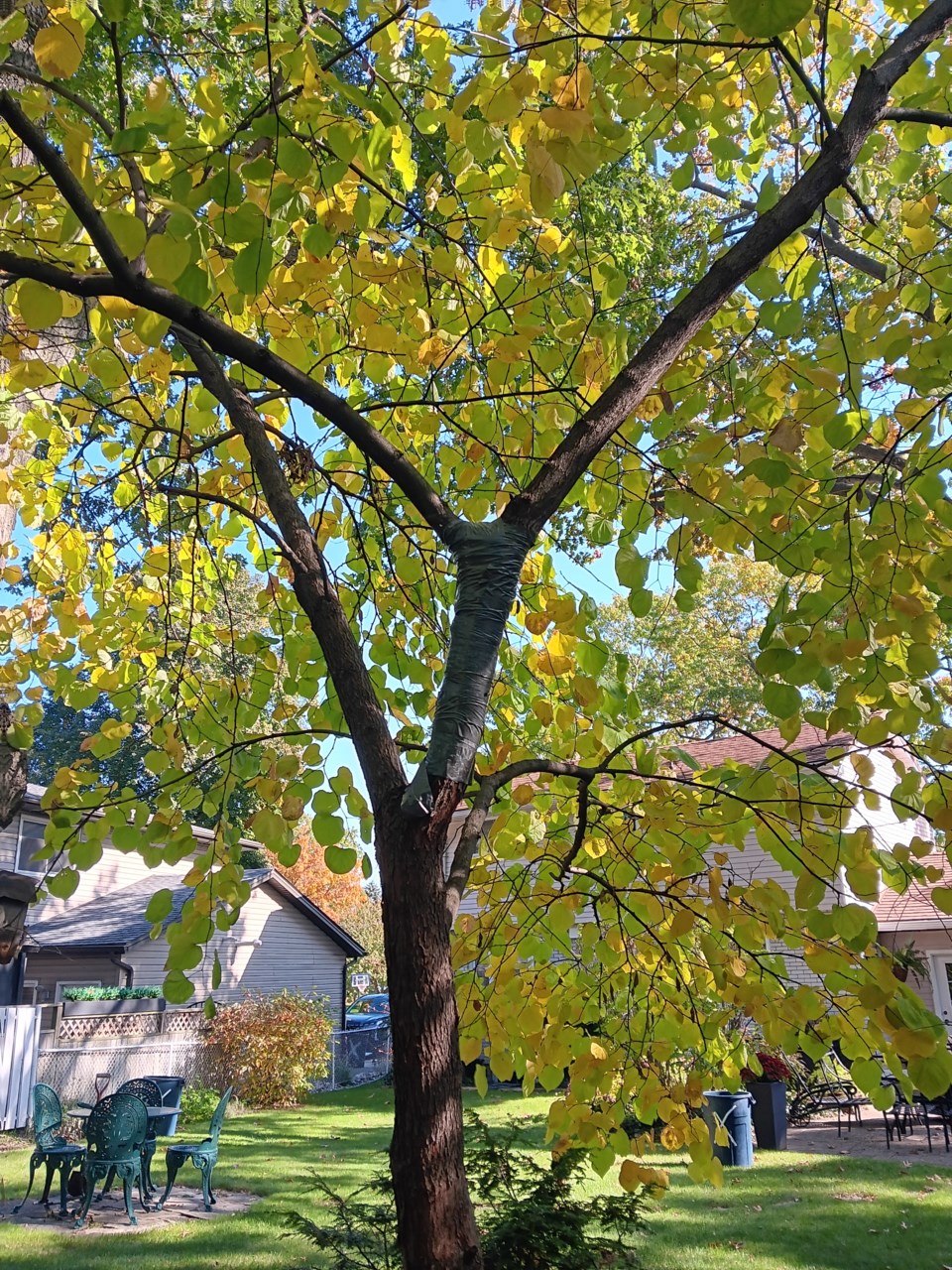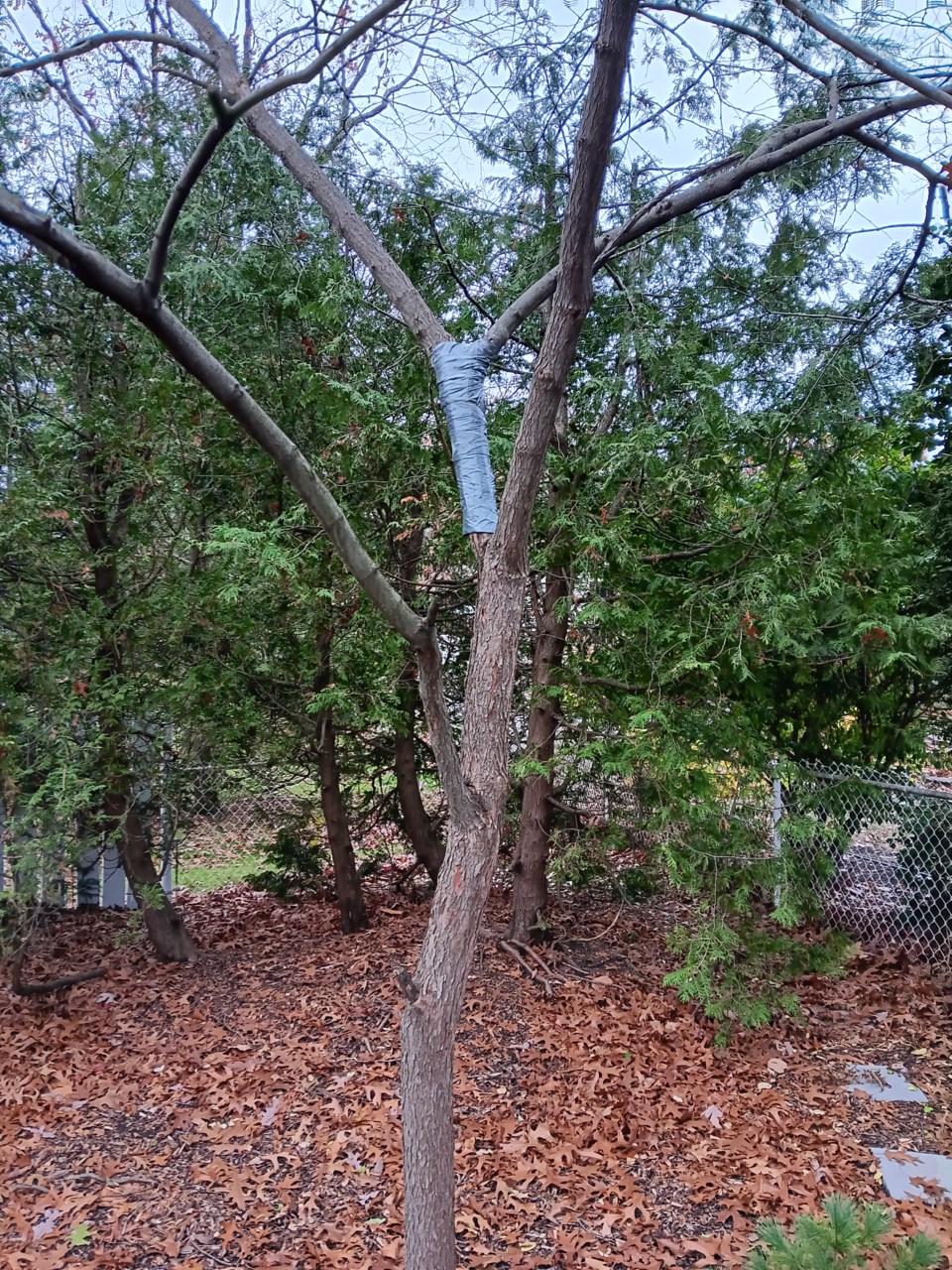When my wife and I bought our home we loved that the property had a number of mature Oak trees as did many other houses on the street. The developer had made a conscious effort to preserve as many trees as possible in the neighbourhood. The first family to purchase the property in the 60’s also planted a beautiful Magnolia tree in the centre of the front lawn to celebrate the birth of their daughter.
By 1983 when we moved in we observed that the Magnolia commanded admiring looks from passers-by every Spring when it bloomed so spectacularly if only for a brief time.
The Magnolia tree was not native to this area but the Oaks are and are considered one of the most important species as they support the well-being of many birds and beneficial insects. Native plants and trees are part of our natural heritage and are essential to the survival of native wildlife. They have the additional benefits of thriving without fertilizing and watering.
The planet is experiencing the twin crises of climate breakdown and loss of biodiversity, each crisis feeding off the other. So when my wife and I had the opportunity to re-think our landscaping we opted to plant more native trees and plants.
To compliment our very old and beautiful Oak trees we have planted 3 Redbud trees, a Serviceberry, a Red Oisier Dogwood and a Pagoda Dogwood. We have also added native plants including Purple Cone flowers, Butterfly Weed, Wild Bergamot, Golden Rod, Jack-in-the-Pulpit, Cardinal plant and many others.

Our largest Redbud tree was planted over 15 years ago. It began as a sapling and for the first few years, it hardly grew at all. Eventually, it took off and grew rapidly. Our patience was rewarded and today it is satisfying to stand under its magnificent canopy (see photo above) and enjoy its welcoming shade.
Two years ago this Redbud had one of its main limbs partially ripped off in a wind storm. We did not want to sever it completely so we used duct tape to hold it in position (see photo below). The first-aid was successful and sap still flows to its branches. We now affectionately call the tree “Ducky”.

Although the Magnolia is not native it brings great joy and it is wonderful to recall that it was planted to welcome a child into the world, a child who has grown into a woman we have now met and call a friend. I do regret that my wife and I did not plant special trees when our daughter and son were born as permanent symbols of gratitude to welcome them into the world.
In her best-selling book, “Braiding Sweetgrass” Robin Wall Kimmerer shares why she bought a house on a large property in New York State for her and her two young daughters. She loved that it had two mature Maple trees out front. She learned that the Maples had been planted by the original owners as part of their wedding vows. Since then those Maples have become large and stately and now offer beauty and protection from the wind and sun. Her daughters often play under their canopy, benefitting from the gift of that young married couple, a gift that will keep on giving.
While the efforts by my wife and I to plant native trees and plants are very modest, consider the impact if everyone could plant a tree or add native plants to their property. Not everyone lives in a house of course but even a few plants on an apartment balcony will contribute to the effort. Each one of us can play a small role and make a meaningful difference to the cumulative “power of many”.
We can also encourage our municipal council to prioritize native species just as the town of Kincardine has done so impressively. Mother Nature provides the means to help us create natural beauty, protect biodiversity, add oxygen and remove excessive carbon dioxide from the air. It is up to us. Time is of the essence if we are serious about addressing the twin crises of climate change and loss of biodiversity.
Special Event
On Thursday, November 21 at 7 pm, Mike Smalls will give a presentation on how to plant a native garden at the Sarnia Library Theatre on Christina Street.
Allan McKeown is a member of Climate Action Sarnia-Lambton